Fewer Black, low-income kids learn to swim. A Cincinnati doctor is trying to change that
Uvonne Walker and her 74-year-old mother, Brenda Sharpe, aren't swimmers. It's on Walker's bucket list to learn, she said, but she's not sure when or if that will happen.
"I don't get in it," Walker said of the water. "I just watch everybody else."
Opinion column: I almost drowned before I won a gold medal swimming. We have to teach Black kids to swim.
At Mercy HealthPlex in Fairfield this summer, the two women watched 10-year-old Journee Sharpe kick his legs in the water and dip his head under the water's surface. He is Walker's nephew and Sharpe's grandson. His mother died of kidney cancer in November. The family is still figuring out what life looks like without her.
Walker said Journee hasn't smiled much since he lost his mom. But this summer, taking swim lessons with other kids his age, Journee's spirits lifted. He was terrified at first, but a few weeks into the program, he felt more comfortable splashing around.
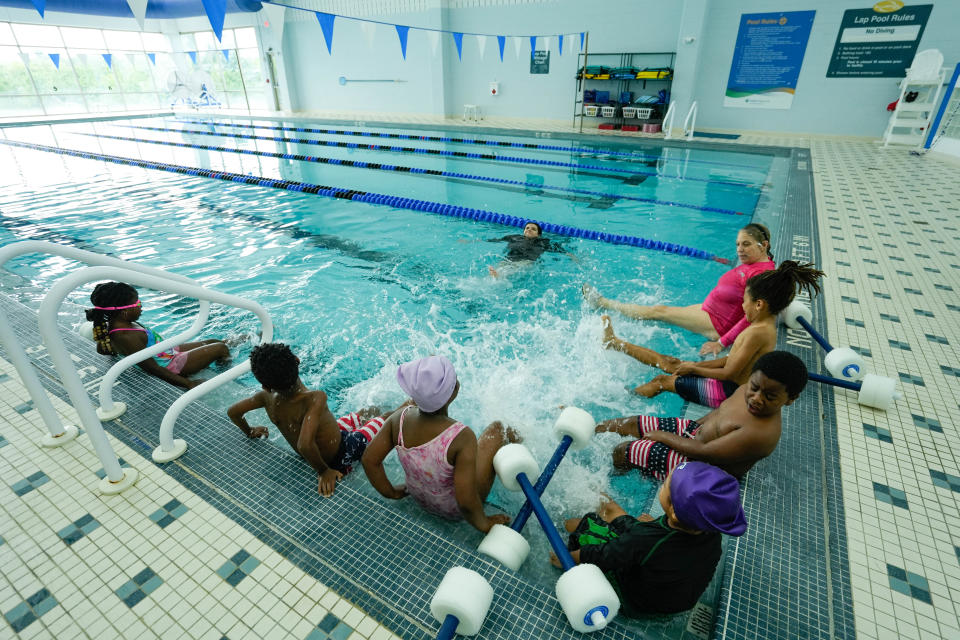
"He's so proud of himself," Walker said.
"It's amazing to me he's doing so well," her mother said. "Look at him. Underwater."
Building confidence is one of the many benefits of teaching kids how to swim. But it's also about safety.
Black children and adults are more likely to drown than their white counterparts, and Black kids between ages 10-14 are most at risk. Black kids in that age range drown in pools at rates 7.6 times higher than their white peers, according to the Centers for Disease Control and Prevention.
Adding to the disparity is the fact that Black children and those from low-income families lack swimming abilities compared to other children. Many don't have money for lessons or access to pools. In Cincinnati, two-thirds of the pools that opened this summer serve neighborhoods with poverty rates below the city average, an Enquirer analysis found.
According to a USA Swimming Foundation study conducted by the University of Memphis and University of Nevada-Las Vegas and posted in 2017:
Nearly 64% of African American children, 45% of Hispanic children and 40% of white children have no or low swimming ability.
Of children in families with a household income less than $50,000, 79% have no or low swimming ability.
African American children and their parents are three times more fearful of drowning than white children and parents.
Another contributing factor: Most pools in this country weren't desegregated until about 60 years ago.
"You got a whole generation of folks my age and older who couldn't go to these public pools to learn to swim," Daniel Betts, director of recreation for the city of Cincinnati, told The Enquirer. "We don't talk about that."
Journee took lessons for free through the Mercy Fairfield Forest Park Swimming Safety Initiative, along with 21 other children. These kids were referred by Dr. Stephen Wilson, a Forest Park pediatrician, and the program is led by Mercy Health Fairfield HealthPlex Center Director Larry Mestel. Over five weeks, kids learned water safety awareness, basic swimming skills and how to recognize and respond to a swimmer in trouble.
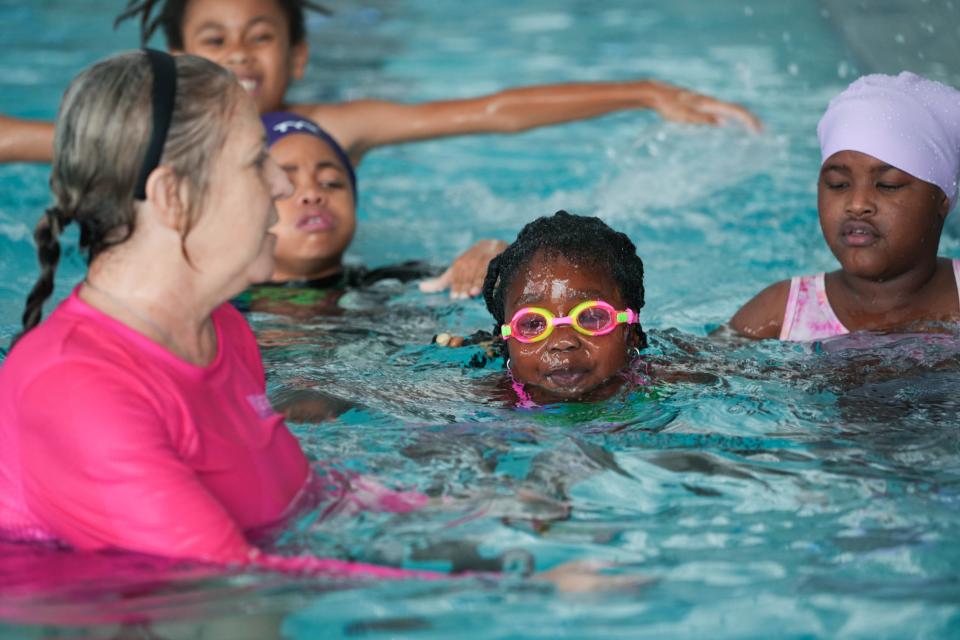
Teaching kids, especially Black kids, how to swim is Wilson's crusade. It's personal. A family friend of his drowned and died at the age of 4. Another friend of his nearly drowned at the age of 26. So now, during yearly checkups, he makes a point to ask his patients and their parents about water safety and if they know how to swim. He targets kids between ages 5-10, but he said he'd like to expand the program eventually to adolescents and adults.
"Unfortunately I think a lot of individuals who are maybe a little bit older probably didn't have access to swimming pools, community centers, community pools, and never really learned how to swim," Wilson said. "Maybe they didn't emphasize that enough to their children or to their grandchildren, to be able to swim. So that's a cycle that we want to try and break because water is such a large part of the recreational activities in this country."
Swimming in Cincinnati: The fatal drowning rate for black kids is stark. History is part of that.
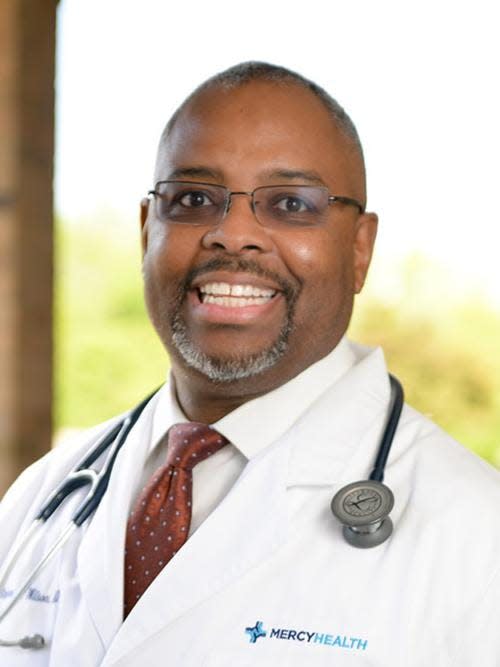
Unlike with soccer or taking up running, where all you need is a ball or maybe a new pair of shoes, swim lessons "can be a little bit of a luxury," said Laura Proto, senior gift officer for the Mercy Health Foundation-Greater Cincinnati, who wrote the grant for the program.
You need a pool. And even in areas where a pool is within walking distance, some parents might not feel comfortable letting their children outside.
"Especially for these neighborhoods where there can be issues of violence and safety. It's safer for these families to keep their kids in the home all the time," Proto said.
Neighborhoods with higher poverty rates have less access to city swimming pools
Free swim lessons are provided at Cincinnati pools, too, on a drop-in basis. But access to city pools varies across Cincinnati, and especially with the lifeguard shortage over the last few years, neighborhoods with higher poverty rates tend to have fewer options.
Last year the city of Cincinnati only opened 11 of its 23 pools due to the lifeguard shortage. This year, 19 pools were opened and 12 of those pools provided free swim lessons.
Pools didn't open last summer or this summer in Winton Hills, Camp Washington or Mount Auburn. Those neighborhoods rank No. 3, No. 17 and No. 19, respectively, when it comes to the percent of residents living in poverty among Cincinnati's 52 neighborhoods, according to U.S. Census data analyzed in The Enquirer's neighborhood report card.
The city's neighborhoods with the highest rates of poverty − Lower Price Hill/Queensgate and Roll Hill − do not have city pool facilities. Nor do the neighborhoods with the lowest poverty rates: Hyde Park, Mount Lookout/Columbia Tusculum and California.
But let's break it down this way: More than 26% of Cincinnati's residents live in poverty. There are 24 neighborhoods with a higher rate of poverty in the city. Of those neighborhoods, seven had access to a pool this summer.
For the 28 neighborhoods with poverty below the city's rate, 16 had access to a pool this summer.
"We don't open or close our pools based on race," Betts said.
"The issue is that we need more Black and brown kids in the inner city learning to swim and we need them to become lifeguards in their neighborhood," he said.
Ziegler Park pool, in Over-the-Rhine, was open in 2022 and 2023. But it's operated by Cincinnati Center City Development Corp., a nonprofit better known by 3CDC. While the organization works closely with the city of Cincinnati, it is a separate entity and not connected to the Cincinnati Recreation Commission.
Joe Rudemiller, vice president of marketing and communications for 3CDC, told The Enquirer Ziegler pool provided free swim lessons to children and adults the last two summers. There were more than 470 participants in 2022 and more than 600 participants this year. Rudemiller said 46% of those participants have household incomes under $35,000.
How Cincinnati decides which pools to open
Betts said the goal is to open all of the city's public pools every summer. But with the lifeguard shortage, the city has had to pick and choose which pools to open. And since the pools are exposed to harsh winters every year, Betts said the first deciding factor in which pools to open is maintenance and safety standards.
Then it depends on how many lifeguards the city has to distribute among its pools for the summer. Betts said the city doesn't force assignments, so lifeguards get a say in which pools they want to work at.
To open all of the city's pools, Betts said, it takes about 270 guards. This year the American Red Cross, which has provided lifeguards to Cincinnati pools since 2018, was able to train 200 lifeguards.
The lifeguard shortage has been a national issue in recent years, said Stephanie Byrd, regional chief executive officer for the American Red Cross Central & Southern Ohio Region. Byrd said COVID-19 "put quite a damper" on the program, which is a problem, because the lifeguard issue is a circular one: When pools aren't open, kids don't learn to swim, and fewer of them want to or can become lifeguards. When there aren't enough lifeguards, pools can't open. Repeat.
There's little access to public pools in Forest Park, too, Wilson said. Providing opportunities for young kids to learn how to swim, including providing the pools for them to learn in, is crucial to saving lives.
"It's an investment we need to make," Wilson said. "Because drowning is completely preventable."
Betts said the Cincinnati Recreation Commission threw incentives into lifeguard recruitment this summer: giving bonuses, increasing pay and even creating an academy to target city kids eligible for lifeguard jobs. There are several reasons why kids don't want to be lifeguards. One repellent he's heard from Black girls recently is that the pool will mess up their hair, which many spend a lot of time and money getting just right.
A lot of the lifeguards at Cincinnati's public pools are from the suburbs, Betts said. That bothers him.
"We need to change that mix. We need a more urban mix of kids becoming lifeguards," he said.
The new lifeguard academy, which pays kids living in the city and in poverty to learn how to swim, will hopefully change that structure, Betts said. There are about 30 kids in the program now.
"The idea is to get them excited about swimming so that then they can become lifeguards when they turn 15-16," Betts said.
For younger kids, Betts said there are plenty of children going to the city's pools, with and without chaperones. But the city isn't seeing adults in the community signing their young kids up for swim lessons, even though Betts said they've made it clear that through scholarships and grants any kid in the city can learn to swim for free.
"We need the community's help," Betts said. "Help us attract young people in communities where we just don't have enough of those young people signing up to learn to swim and to be lifeguards."
Building confidence in young swimmers
Even though she can't swim herself, Walker said she thinks swim lessons should be a rite of passage.
"That should be up there with driving if you think about it," she said.
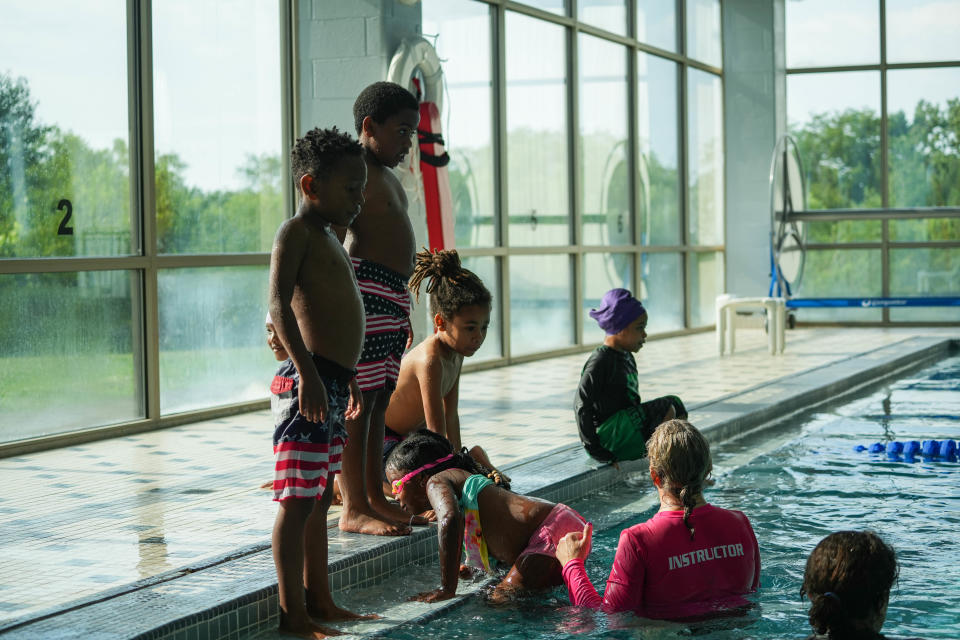
What if there's a flood? In case of an emergency, Walker said everyone should know how to swim. She's glad her nephew is learning at a young age.
Eden Dobbins, 7, was another student part of this summer's Swimming Safety Initiative. His father, Josh Dobbins, watched him dive for rings from the pool's perimeter on a Wednesday in July. Eden was a little more cautious than usual, after accidentally swallowing some water the day before.
"Eden, put your head all the way under," Josh Dobbins called from the bench. "How do you see the rings if you don't open your eyes?"
"I can sense them," Eden called back. "I have echolocation."
Eden said he "likes to swim a lot." This summer he learned how to put his eyes, mouth and nose in the water and how to float on his back. His dad said the lessons make it easier to send Eden with friends to the YMCA, to Kings Island's Soak City Water Park or to a neighbor's pool.
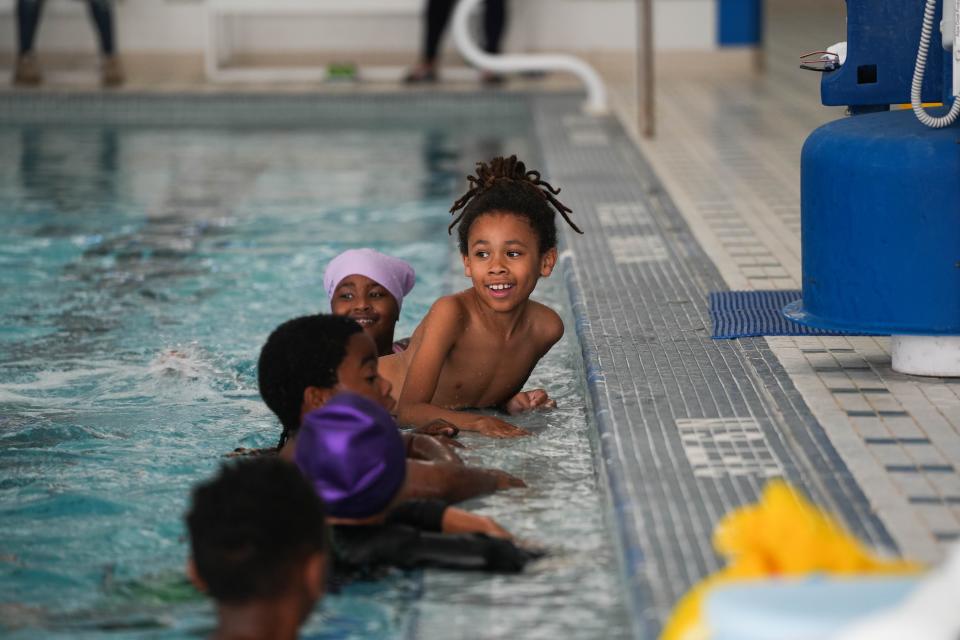
Toward the end of the lesson, the instructor had all of her students line up along the edge of the pool to take turns jumping into the water. Eden's eyes grew wide with adrenaline as he flew into the air and landed with a splash.
"Yes! Yes," he cried, once he was back in the water. "I can't believe I did it!"
This article originally appeared on Cincinnati Enquirer: COVID pool closures, lifeguard shortage means fewer swim lessons

